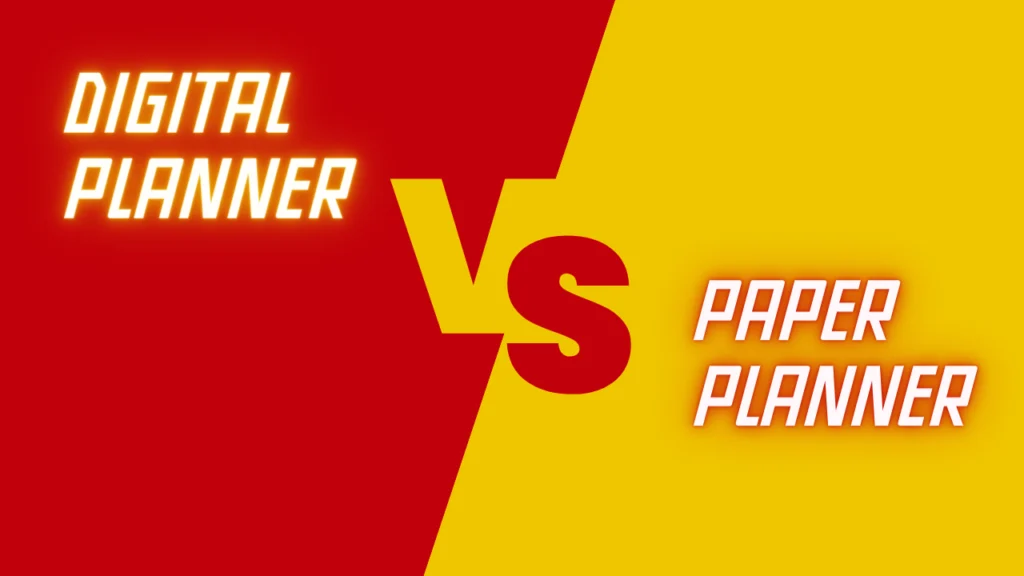
Table of Contents
Introduction
Planners have become an integral part of our daily lives, helping us stay organized, manage our time efficiently, and achieve our goals. With the advent of technology, the choice between using a traditional paper planner or a digital planner has become a dilemma for many. In this article, we will delve into the benefits of both digital and paper planners, weighing their advantages and disadvantages to help you make an informed decision.
Benefits of Digital Planners
Digital planners offer a myriad of advantages, leveraging technology to enhance organization, productivity, and collaboration.
Accessibility and Syncing Across Devices
One of the greatest benefits of digital planners is their seamless integration with mobile devices, laptops, and tablets. With a digital planner, you can access your schedule and tasks from anywhere, ensuring you never miss an important appointment or deadline. Real-time synchronization allows for instant updates across all your devices, ensuring that you’re always up to date.
Organizational Features and Customization Options
Digital planners offer an array of organizational features and customization options that are hard to match with traditional paper planners. Virtual sticky notes, checklists, and reminders help you stay on top of your tasks, while the flexibility in layouts, fonts, and color schemes enables you to tailor your planner to your personal preferences and style.
Efficient Time Management Tools
Efficiency is key, and digital planners excel in providing time management tools that help you make the most of your day. Automated notifications and alerts keep you on track, ensuring you never forget an important task or appointment. Additionally, smart tools for task prioritization and productivity tracking empower you to optimize your workflow and be more productive.
Eco-Friendly and Space-Saving Solution
In an increasingly eco-conscious world, digital planners offer an environmentally friendly alternative to paper planners. By reducing paper usage, digital planners contribute to a smaller environmental footprint. Moreover, they eliminate the need for physical storage space, as all your plans and notes are conveniently stored digitally, freeing up physical clutter and reducing waste.
Collaboration and Sharing Capabilities
In today’s interconnected world, collaboration is key. Digital planners allow for real-time sharing and collaboration with teams, making it easier than ever to coordinate projects and schedules. Additionally, they seamlessly integrate with online calendars and appointment scheduling, ensuring that everyone is on the same page and meetings can be scheduled effortlessly.
Advantages of Paper Planners
While digital planners offer a host of benefits, paper planners have their own unique advantages that cater to different needs and preferences.
Tangible and Cognitive Benefits
One of the major advantages of using a paper planner is the enhanced cognitive processing and retention it offers. Studies have shown that physically writing down information aids in memory recall and comprehension. The tactile experience of flipping through the pages and the act of physically writing help engage your senses, making the planning process more immersive and memorable.
Creativity and Personalization
Paper planners provide an outlet for creativity and personalization that digital planners sometimes lack. The ability to handwrite notes and sketches allows for enhanced creativity and brainstorming. Additionally, paper planners often come in a wide range of unique designs and customization options, showcasing your personality and style.
Distraction-Free and Offline Functionality
For those who prefer a technology-free zone to focus and concentrate, paper planners offer a distraction-free alternative. By eliminating digital distractions from notifications and social media, paper planners allow you to fully immerse yourself in your planning process. Furthermore, paper planners do not require internet connectivity, ensuring you can always access your schedule even in areas with limited or no internet access.
Intuitive Visual Layouts
Paper planners often boast intuitive visual layouts that make it easy to navigate and visualize your schedules. The physical nature of flipping through physical pages allows for quick scanning, providing a better overview of your day, week, or month at a glance. This visual layout contributes to improved time management and productivity.
Privacy and Security
With concerns about digital security on the rise, paper planners offer peace of mind when it comes to personal and sensitive information. Unlike digital planners, paper planners are not susceptible to hacking or digital threats. This added level of physical security ensures the confidentiality of your personal and sensitive information.
Considerations When Choosing Between Paper and Digital Planners
When deciding between a digital or paper planner, there are several factors to consider, based on your personal preferences, work environment, and budget.
User Preferences and Practical Considerations
The choice between a digital or paper planner ultimately comes down to personal preference. Some individuals may find comfort and joy in the tactile experience of using a paper planner, while others appreciate the convenience and functionality of a digital planner. Additionally, consider the compatibility of your chosen planner with your existing devices and technological infrastructure.
Work Environment and Lifestyle Factors
Consider your work environment and lifestyle when choosing a planner. If you work primarily in a digital environment and rely heavily on technology, a digital planner may seamlessly integrate into your workflow. On the other hand, if you prefer a technology-free environment or often find yourself in situations with limited internet access, a paper planner may be the better choice.
Cost and Budget Considerations
Another factor to consider is the cost and budget implications. Digital planners often require an upfront investment, such as purchasing apps or subscription fees. However, in the long run, they may prove to be a more cost-effective option as they eliminate the need for continual purchases of physical planners. On the other hand, paper planners may have a lower upfront cost but need to be replaced periodically.
Summary and Key Takeaways
In summary, both digital and paper planners offer unique advantages and cater to different needs and preferences. Digital planners provide accessibility, organizational features, time management tools, eco-friendliness, and collaboration capabilities. On the other hand, paper planners offer tangible and cognitive benefits, creativity, offline functionality, intuitive visual layouts, and privacy. When making a decision, consider your personal preferences, work environment, and budget constraints to choose the best planner option for you. Remember, there is no one-size-fits-all solution, and what matters most is finding a planner that suits your individual needs and helps you stay organized and productive.

